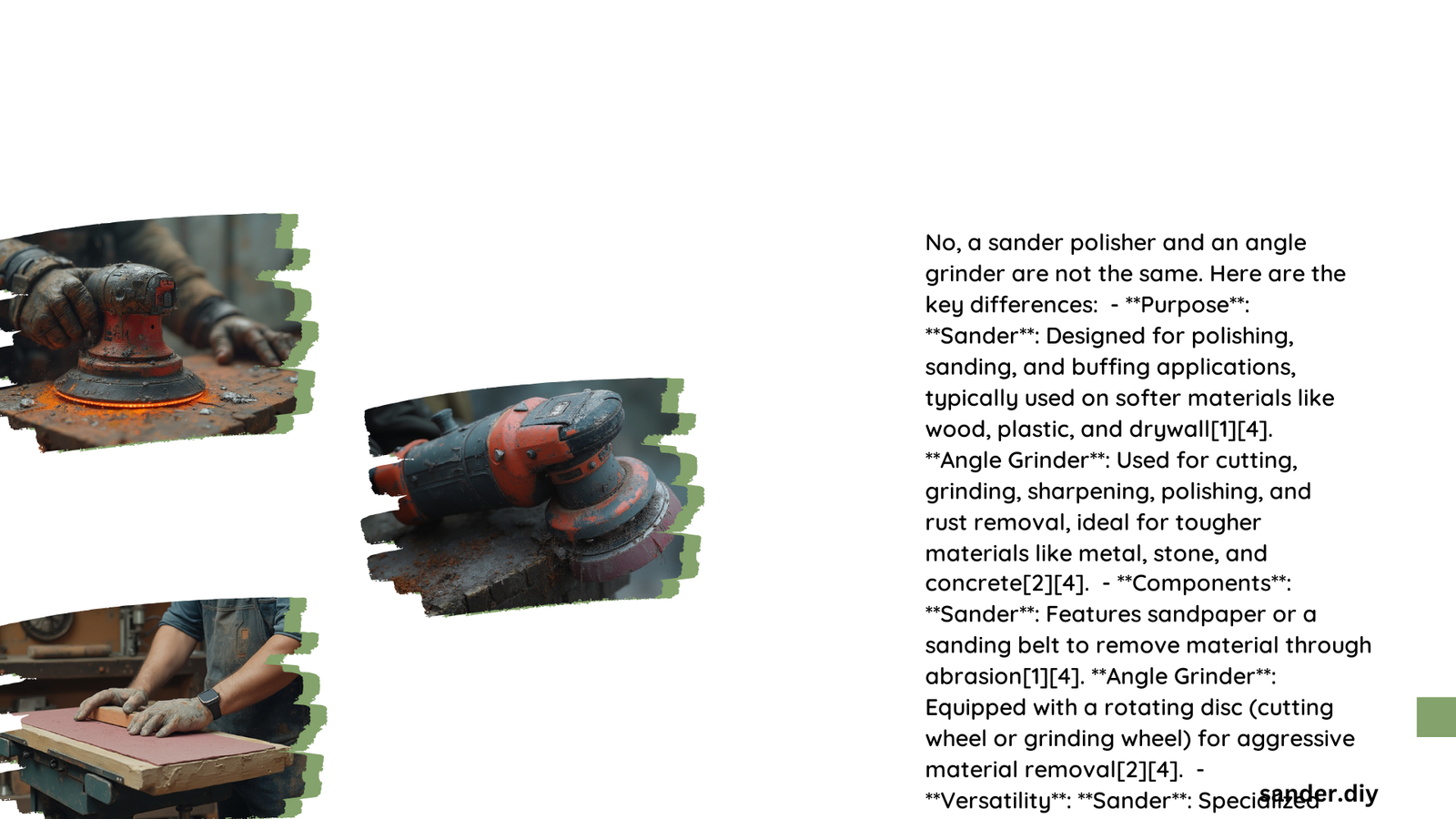A sander polisher represents a versatile power tool that shares remarkable similarities with angle grinders, offering professionals and DIY enthusiasts a multi-functional solution for surface preparation, polishing, and finishing tasks. These tools provide exceptional performance across various materials, from metal and wood to automotive surfaces, with advanced technological features that enhance precision and efficiency.
What Makes a Sander Polisher Similar to an Angle Grinder?
Core Mechanical Similarities
A sander polisher and angle grinder share fundamental mechanical characteristics that enable their interchangeable usage in many scenarios:
| Feature | Sander Polisher | Angle Grinder |
|---|---|---|
| Power Range | 800-1500 Watts | 700-1800 Watts |
| Speed Control | Variable Speed | Variable Speed |
| Disc Size | 5-7 inches | 4-9 inches |
| Primary Applications | Polishing, Sanding | Cutting, Grinding |
Technical Performance Comparison
Power and Motor Specifications
The Makita 9227C exemplifies a high-performance sander polisher with:
- Motor Power: 10 AMP (approximately 1200 watts)
- Speed Range: 600-3000 RPM
- Weight: 6.8 lbs
- Electronic Speed Control: Maintains consistent performance under load
What Are the Primary Use Cases?
Surface Preparation Techniques
- Metal Surfaces
- Remove oxidation
- Create smooth finishes
-
Prepare for painting or coating
-
Automotive Applications
- Restore clearcoat
- Polish paintwork
-
Eliminate minor scratches
-
Wood and Composite Materials
- Sand rough edges
- Create uniform surfaces
- Prepare for finishing treatments
How Do Attachments Expand Functionality?
Compatible attachments transform these tools into versatile workhorses:
- Polishing Pads: Multiple grit levels
- Wool Bonnets: High-gloss finishing
- Sanding Discs: Various abrasiveness ranges
- Cutting Wheels: Limited angle grinder compatibility
What Challenges Might Users Encounter?
Potential Limitations
- Overheating Risks: Prolonged continuous use
- Space Constraints: Larger tools might limit accessibility
- Material Compatibility: Not suitable for all surface types
Expert Recommendations
To maximize tool performance:
- Match speed settings to specific materials
- Use soft start features
- Implement periodic maintenance
- Invest in high-quality attachments
- Wear appropriate safety gear
Technical Considerations for Selection
When choosing between a sander polisher and angle grinder, consider:
- Project requirements
- Material characteristics
- Desired finish quality
- Budget constraints
Safety and Maintenance Protocols
- Inspect tools before each use
- Clean attachments regularly
- Store in dry, temperature-controlled environments
- Replace worn components promptly
- Follow manufacturer’s maintenance guidelines
Conclusion

A sander polisher functioning like an angle grinder offers remarkable versatility, bridging performance gaps across multiple applications. Understanding their nuanced capabilities empowers users to select the most appropriate tool for specific tasks.
